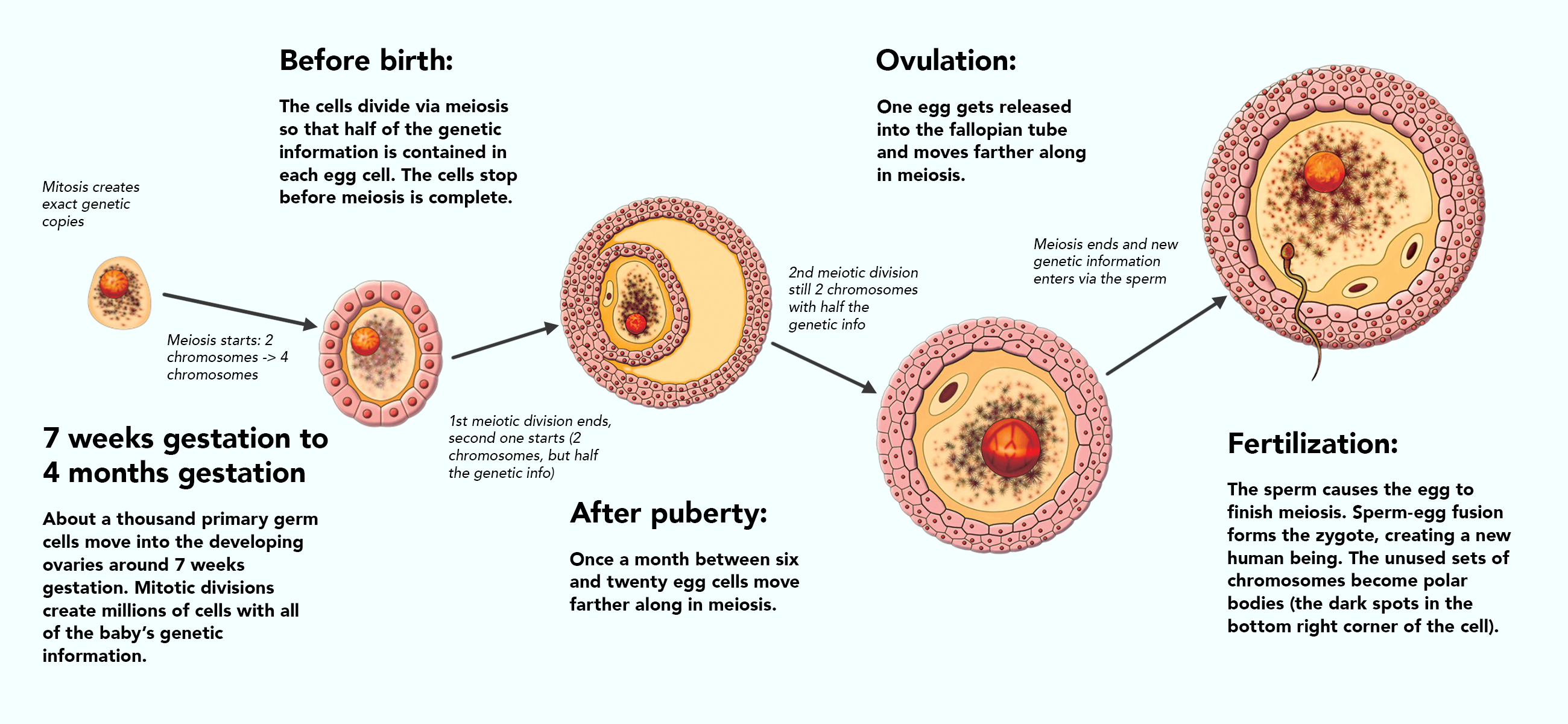In fact, she had more egg cells as a fetus than at any other point in her life. Both the egg cells in a female, and the sperm-producing cells in a male come from primary germ cells that originate in the yolk sac. During gestational week 7, 1000 to 2000 primary germ cells migrate from the yolk sac through the developing umbilical cord into the developing ovary or testes 1 These cells will provide the entire pool of future egg and sperm cells.
The picture below shows how eggs form in a process known as oogenesis. In females, the primary germ cells immediately continue dividing via mitosis. During mitosis, cells make an exact copy of all of their genetic information. In fact, there are special mechanisms to make sure that there are no copying mistakes in the primary germ cells when the DNA replicates. These cells have a full set of 46 chromosomes.2









